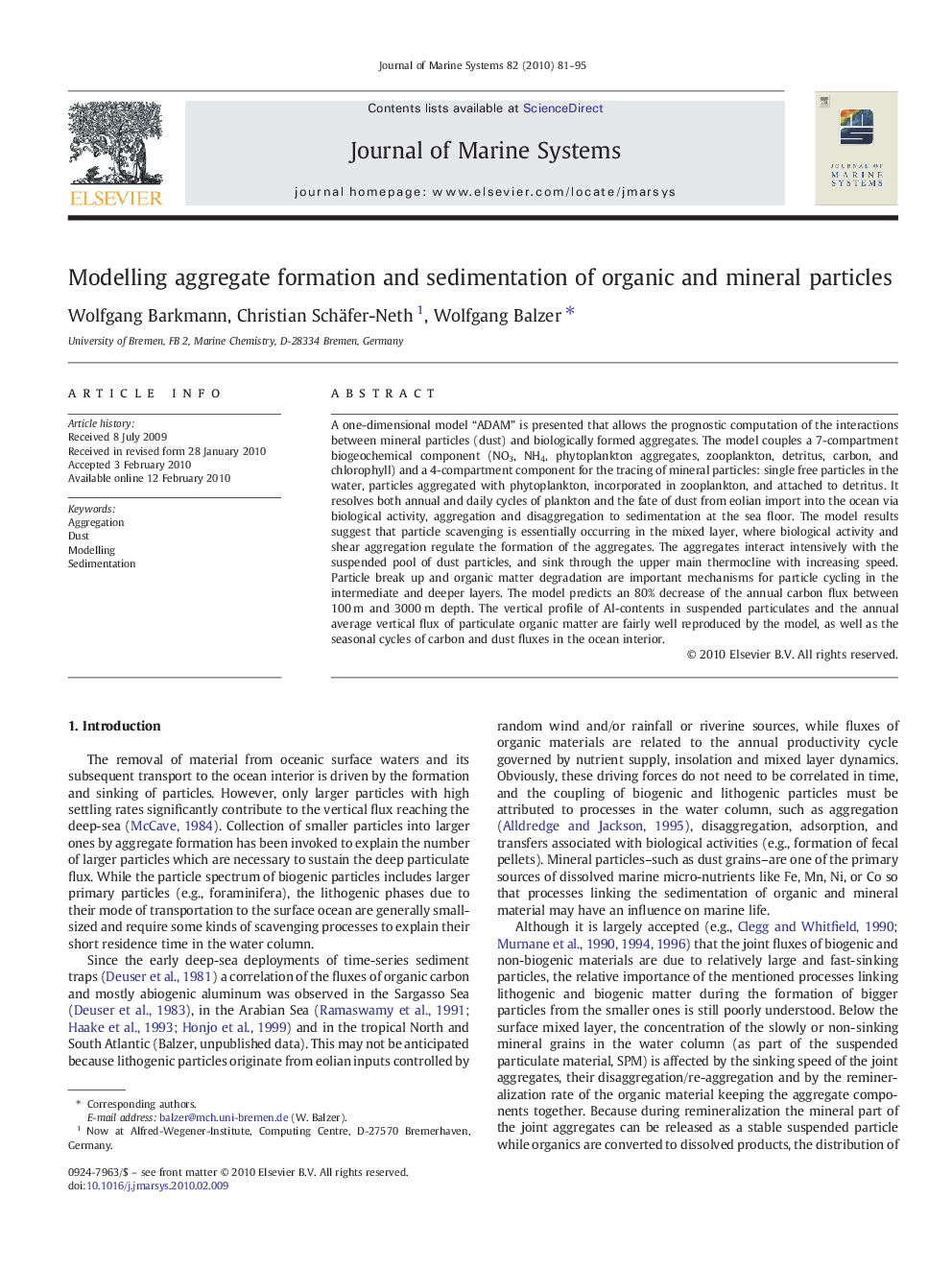| کد مقاله | کد نشریه | سال انتشار | مقاله انگلیسی | نسخه تمام متن |
|---|---|---|---|---|
| 4548462 | 1327907 | 2010 | 15 صفحه PDF | دانلود رایگان |

A one-dimensional model “ADAM” is presented that allows the prognostic computation of the interactions between mineral particles (dust) and biologically formed aggregates. The model couples a 7-compartment biogeochemical component (NO3, NH4, phytoplankton aggregates, zooplankton, detritus, carbon, and chlorophyll) and a 4-compartment component for the tracing of mineral particles: single free particles in the water, particles aggregated with phytoplankton, incorporated in zooplankton, and attached to detritus. It resolves both annual and daily cycles of plankton and the fate of dust from eolian import into the ocean via biological activity, aggregation and disaggregation to sedimentation at the sea floor. The model results suggest that particle scavenging is essentially occurring in the mixed layer, where biological activity and shear aggregation regulate the formation of the aggregates. The aggregates interact intensively with the suspended pool of dust particles, and sink through the upper main thermocline with increasing speed. Particle break up and organic matter degradation are important mechanisms for particle cycling in the intermediate and deeper layers. The model predicts an 80% decrease of the annual carbon flux between 100 m and 3000 m depth. The vertical profile of Al-contents in suspended particulates and the annual average vertical flux of particulate organic matter are fairly well reproduced by the model, as well as the seasonal cycles of carbon and dust fluxes in the ocean interior.
Journal: Journal of Marine Systems - Volume 82, Issue 3, August 2010, Pages 81–95